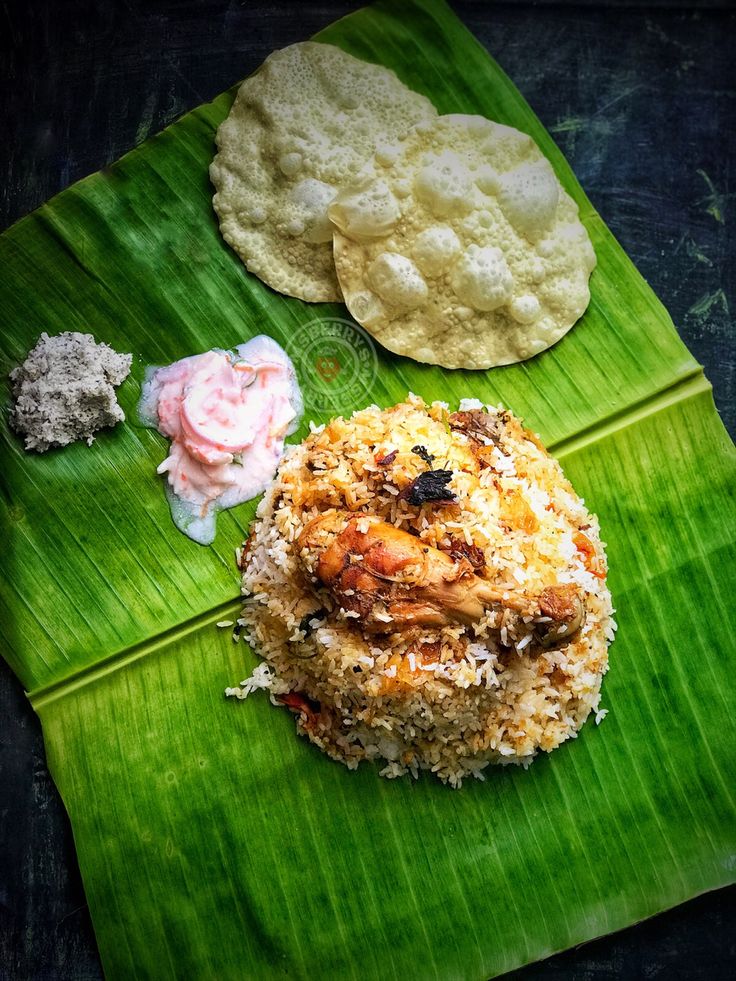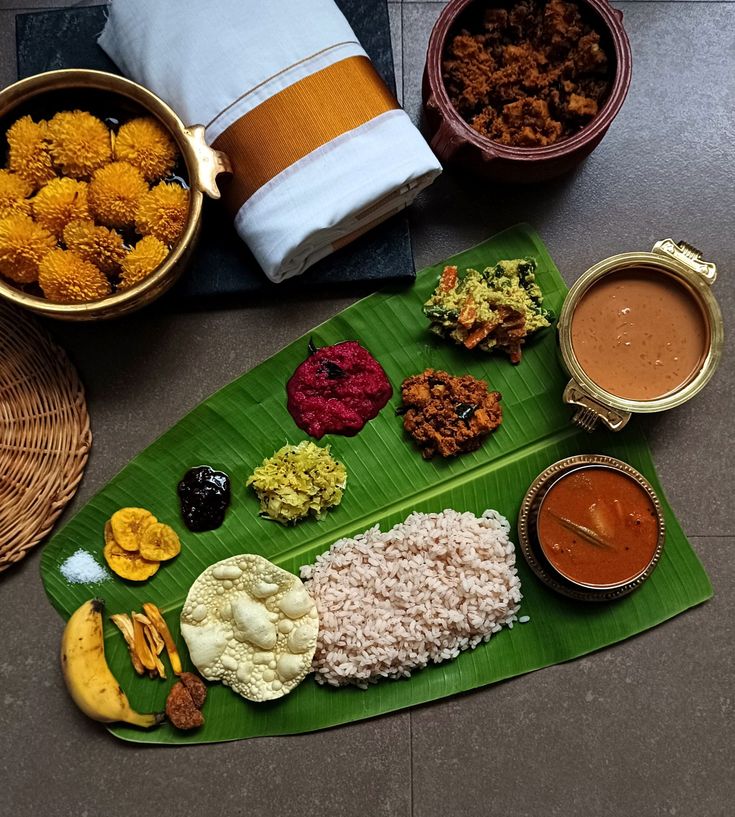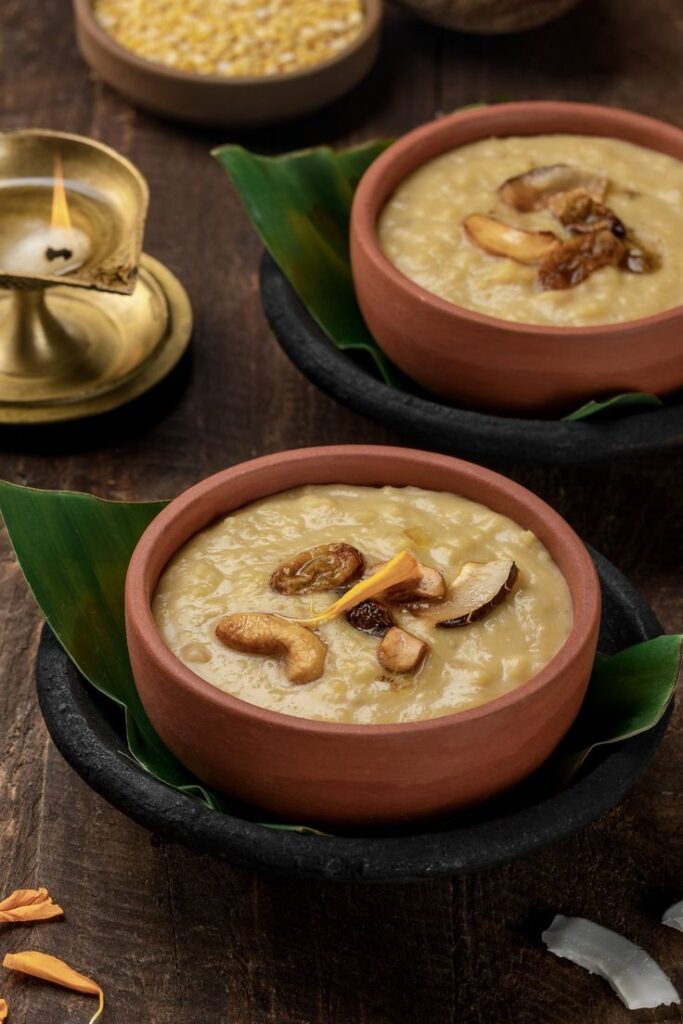The Persuasive Cuisine of Kerala
Always, when talking about food, start with the pre-occupations. They are so wildly off the mark that they make excellent dinner-table conversation when savouring the real thing. For instance, “All Indian food is hot”, goes the bias, “and south Indian food is the hottest.” This is the same as the other food prejudices: “All American food is hot-dogs and hamburgers. All Chinese food is American chop-suey!”
In fact 90% of Indian food, perhaps more, has very few chillies. It is, more often, flavoured with the non-scalding spices such as cinnamon, cardomom, ginger, cloves, garlic, cumin, corriander and turmeric. Spices are used in India to tone up the system the way wines aid the digestion of western cuisine.
As for the cuisine of Kerala, with a few notable exceptions, it is mildly flavoured, gently cooked and sits with a certain genteel delicacy on the stomach. A case in point is the rich biryanis of the northern parts of Kerala: the Malabar biryanis.

Pilaos, pilafs and biryanis are meats, spices and onions slowly steam- cooked in boiled rice. Thus all the goodness of the rice and the meat broth are locked into and blended in this dish which is served steaming hot. You’ll find it served off streetside barrows in the Asiatic republics of the USSR, Arabia,Spain (where it becomes the seafood Paella), Afghanistan, Pakistan, and all across our land. Our Malabar biryani, however, did not evolve during a long journey from the northern steppes. It was brought across the Indian ocean by Arab seafarers so its appreciably richer than its northern Indian cousin. Do eat it hot before the cooking fats which permeate it have had time to cool. Its a meal in itself. Excellent with crispy, crunchy papads: the lentil wafers called Popa-Dums in restaurants abroad.
A favourite breakfast dish is poottu. Rice flour dough is layered with grated coconut, like a ribbon cake, and steamed in a hollow bamboo cylinder. It is eaten sprinkled with sugar, or with mashed bananas or with a spicy curry made of channa or chickpeas.Iddlis or fluffy white steamed rice cakes, and dosas which look a bit like thin golden omlettes but are really pancakes made of an yeasty rice-and- lentil batter, are popular in Kerala and very acceptable fare for there is reason to believe that they aren’t strictly Malayali cuisine. They came across from the vegetarian kitchens next door, in the state of Tamil Nadu.

Kerala does have its own, well developed, vegetarian cuisine. If you’re there during the post-harvest festival of Onam do opt for a typical vegetarian Onam lunch. Its traditionally eaten on a banana leaf: very hygienic and disposable. Par-boiled rice is the staple for such a meal, as it is for most Kerala food, and then you ring the changes. A spoonful of rice, and then some thoren. Savour. A little avial with your next spoonful of rice. Or olen. Or kaallen. Or pachadi. A sip of water. Ahh! And then make the rounds all over again, in combinations now. In western food every dish, in a meal, is different, perhaps. In Indian cuisine, every mouthful is.Here, then, is a thumbnail guide to some of the foods that you could have had in combination with that par-boiled rice staple.The thorans are gravy-less dishes of finely chopped par-boiled vegetables, and possibly meat and seafood. The mustard seed used in them gives them a pleasantly assertive flavour, while the lightly fried grated coconut adds the crunch.Avial, on the other hand, is a mixed vegetable gravy dish thickened with coconut and yoghurt. Interesting vegetables, like drum-sticks… scrape out the marrow from the ribbed pieces, treat the protective skin as you would a marrow bone… jackfruit seeds and slices of mango are often used. Your salivary glands will respond very enthusiastically to your first mouthful of avial.Olen is also a gravy dish made of ash gourd and dry beans where the predominant flavour is one that you’re likely to encounter frequently inMalayalee cuisine: coconut milk. Don’t confuse this with coconut water which is the almost clear, refreshing liquid inside the coconut. Coconut milk is the fairly thick liquid squeezed out from the white flesh of a fresh coconut. Its too rich to drink but its great to cook with: the Malayalee equivalent of a dash of wine in haute cuisine.

Bananas, of a special variety called ‘Cochin Bananas’are very popular in Kerala cuisine. Sliced finely and deep fried as chips they are chewy snacks; cut into bits, fried and dipped in jaggery or sugar syrup they are sweets; cooked in thick yoghurt and seasoned with chilly, turmeric, cumin seed and curry leaves they become kaallen – an accompaniment to the main meal.
Indian cuisine is strong on digestives and the Malayalee pachadi is samong the best. This is a fairly thick sauce made of sour yoghurt, grated coconut, mustard seed and a wide-spectrum range of spices including green and red chillies. The yoghurt and coconut, however, cool the rage of the chillies. And if you find little green leaves floating inside the pachadi, they’ve not blown in through the window. They’re leaves of the curry plant widely used in southern cooking and said to be chock full of good things.
Sambaar is a cross between a sauce and a broth. It contains mashed lentils, cooked vegetables and spices including the exotic and edible resin asafoe- tida. Most people find it appealing but some folk find the taste of the seasoning too strong. If you have a fastidious palate, avoid the sambaar.
Then there’s the dish which seems to be everyone’s favourite. A stew with chicken, or mutton or just vegetables, much like spiced Irish stew, cooked in coconut milk. This is eaten with appams. Appams are pancakes made from rice flour leavened with fermented palm sap and cooked on a lightly greased miniature wok. They’re white, soft and as light as a well-risen sponge cake in the centre; with crisp, frilly, petticoats all around. When you’ve had all you can with the stew, have another drenched with golden ghee or clarified butter, and still another with cream and sugar. Bad for the calorie count, great for a sense of well being.

Still feeling adventurous? Keep a cup of the hot, sweet, paayasam handy: they’re e porridge-like sweets with a vermicelli or rice base cooked in milk and sugar or jaggery.

And then order a plate of Red Fish Curry and tapioca. In its original form it seems to have been created especially for fire-eaters and you might find yourself dancing around with sensory overkill. A deep gulp of paayasam might help,its incandescent, admittedly, but you should experience the most dra- matic exception to the rule that Kerala’s cuisine is mildly flavoured, gently cooked and sits with a certain genteel delicacy on the stomach.


Comments